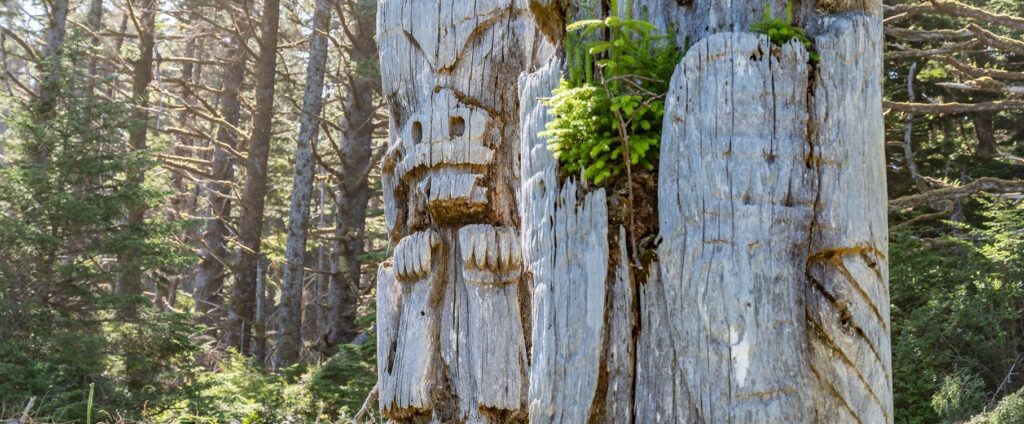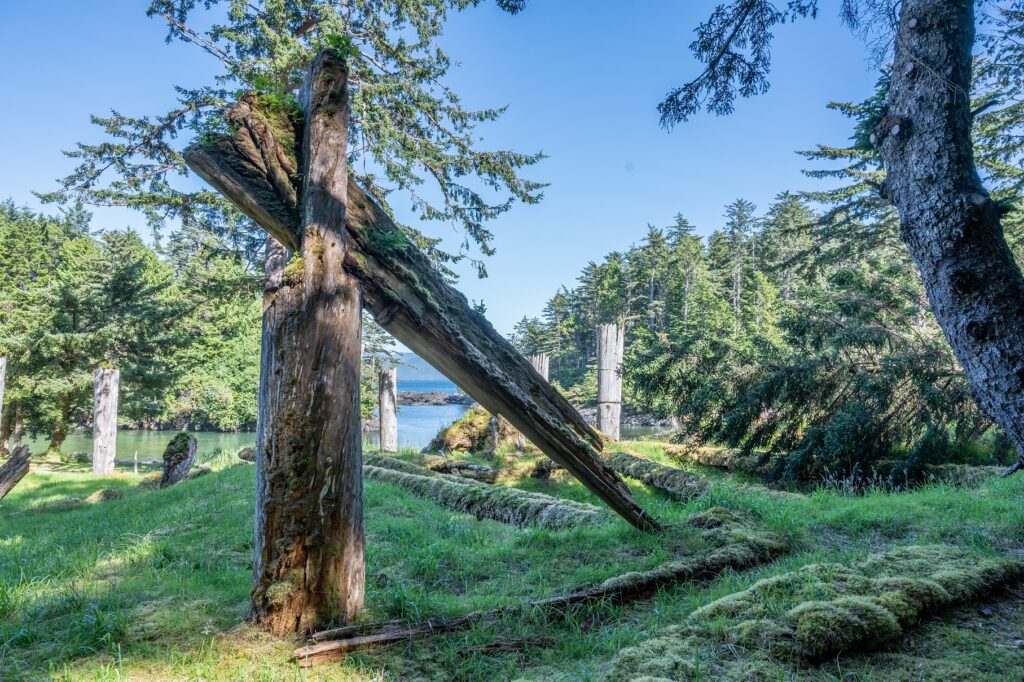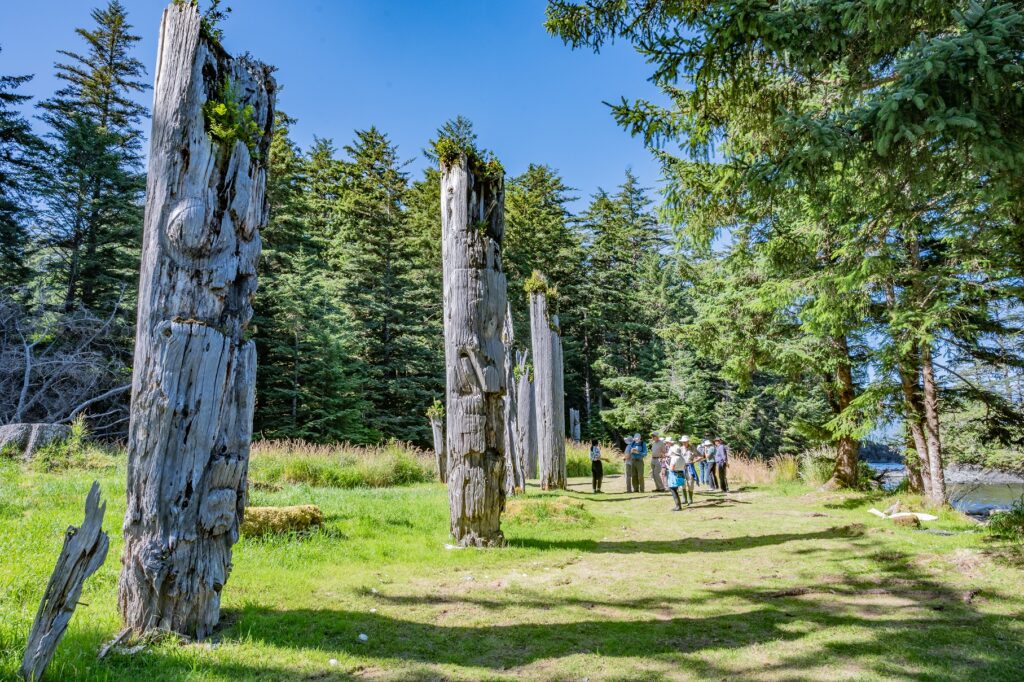
SGang Gwaay is an important Haida Heritage Site that was home for 200-500 Haida people. Oral history and archaeologic studies estimate the Haida occupation of the island to around 10,000 years. Through the 1860’s until shortly after 1880, diseases like smallpox, measles, and typhoid led to the loss of over 90% of all Haida people. With fewer people, the remaining Haida opted to move away from the southern villages like SGang Gwaay and into larger northern communities like Skidegate and Masset.

The site is located on Anthony Island which lies on the southwest fringe of the Haida Gwaii archipelago. The village is on the north east portion of the island, protected from the relentless open Pacific, on a small gravel beach. Arriving by water, the village is hidden by a small islet, making an approach difficult without familiarity of the landing beforehand. At low-tide, this islet is connected via a mudflat, which also provided the Haida with a reasonable access to clams and other marine food sources.

Co-managed by Parks Canada and the Haida Nation, it an important site for biodiversity and more-so for cultural values. Since 1981, the site has been dubbed a UNESCO World Heritage classification as it hosts the best preserved carved Haida mortuary and memorial poles anywhere on earth as well as cedar house posts, house pits, and cedar roof beams slowly returning to the land.
